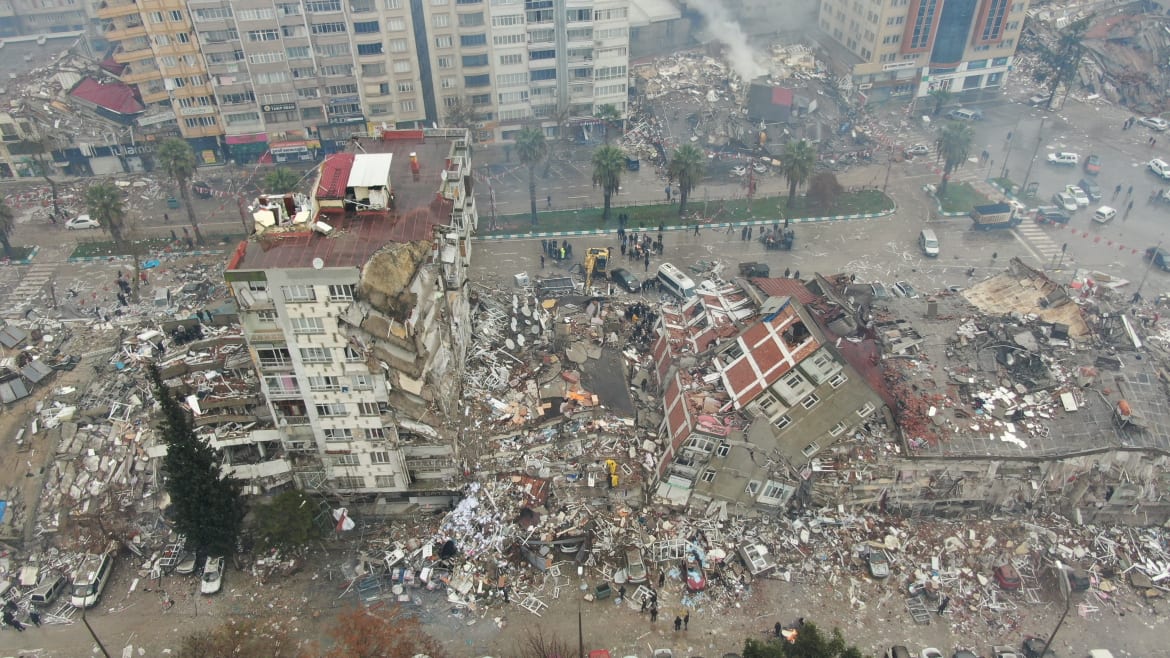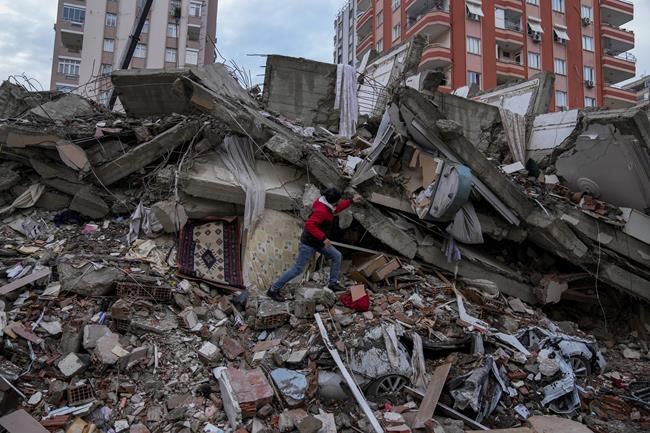[ad_1]
“The Devastating Impact of Earthquake Aftershocks on Turkey and Syria Prolonged for Months”
Ihlas Neue Agentur (IHA) via REUTERS
A 7.8 magnitude earthquake that struck Turkey and Syria early Monday morning has unleashed a cascade of destruction as powerful aftershocks rattled the region, killing thousands.
A magnitude 6.7 aftershock followed the first tremor at around 4 a.m. local time; Then, nine hours later, another massive 7.5 magnitude shock hit the north, followed by smaller aftershocks. These aftershocks are devastating in themselves, collapsing buildings and tearing down an ancient Roman castle, putting people in constant danger. And unfortunately, this can only be a taste of what the region has to contend with for many, many months to come.
“The number of aftershocks will decrease over time, but large events can still occur for months or more,” says Jacha Polet, a geophysics researcher at Cal Poly Pomona. tweeted Monday morning. And experts on social media and in the press conveyed similar sentiments.
According to the US Geological Survey, the region where the quake struck is seismically active, yet only three other magnitude 6 or larger tremors have struck the area since 1970 — most recently a magnitude 6.7 earthquake that struck dozens in 2020 Killed and Injured Thousands In 1822, a 7.0 magnitude earthquake struck Aleppo, Syria, killing tens of thousands. Aftershocks were felt for up to a year later.
To understand why the region could be in danger for so long after the first event, we need to break down how the earthquake happened in the first place. The region lies on what is known as the East Anatolian Fault, a strike-slip fault defined as two boulders sliding past one another. People living around the Pacific Ocean should already be familiar – the infamous San Andreas Fault is another example of this type of fault.
Judith Hubbard, Structural Geologist at Nanyang Technological University in Singapore, explained on Twitter that when the Arabian Plate collides with the Eurasian Plate to the north, the Anatolian Bloc pushes west “like a watermelon seed out of your fingers.” The East Anatolian Fault lies at the intersection of the Anatolian Block and the Arabian Plate, which move relative to each other at about 15 millimeters per year and stretch the Earth’s crust across the fault.
2nd century Roman castle destroyed by deadly earthquake
“Tectonic movement between earthquakes is slow, but the ‘catch-up’ isn’t — it’s this fast movement that causes seismic energy to escape the fault and make the earth shake.” wrote Hubbard.
According to the Incorporated Research Institutions for Seismology Consortium, larger earthquakes are typically followed by hundreds or thousands of aftershocks that occur along and adjacent to the fault that was displaced during the main tremor.
“With rare exceptions, all magnitude 7 to 9 earthquakes have a collection of smaller aftershocks that can occur weeks, years, or even centuries after the main tremor,” the consortium said in a 2019 video.
Thousands of deaths feared in massive earthquake overnight
The “main shock” of an earthquake represents two tectonic plates overcoming friction to slide past one another. In contrast, aftershocks typically represent “minor adjustments along the portion of a fault that slid at the time of the main tremor,” according to the USGS, which lists nearly 60 aftershocks in the region as of Monday morning. In Turkey, some of these aftershocks do not appear to occur along the same fault line as the main tremor, but rather along one spread out.
Another important factor is depth: Shallow earthquakes are much more likely to cause aftershocks than those that occur more than 18 miles underground. The main tremor of this earthquake happened about 10.5 miles underground, Curtin University Earth and planetology researcher Chris Elders said Al Jazeera English.
The full extent of the disaster has yet to be appreciated. Many people remain to be rescued, and many more will be at risk as more aftershocks hit the region in the coming weeks and months.
Read more at The Daily Beast.
Get the Daily Beast’s biggest news and scandals straight to your inbox. Join Now.
Stay connected and get unlimited access to the Daily Beast’s unmatched coverage. subscribe now
[ad_2]
Don’t miss interesting posts on Famousbio










